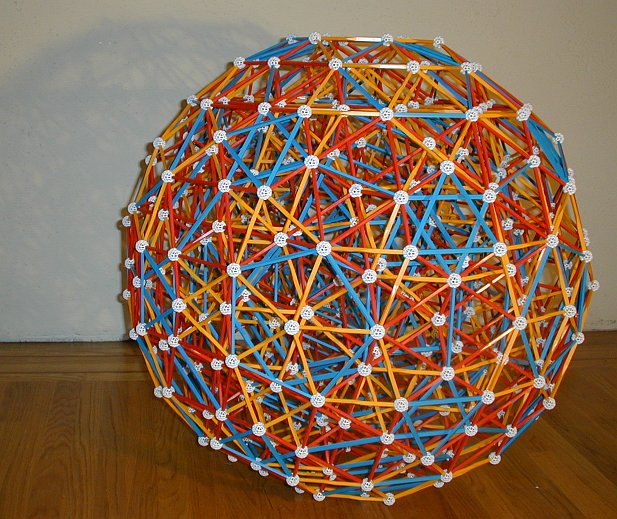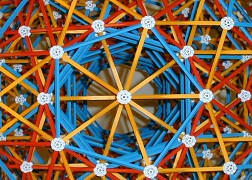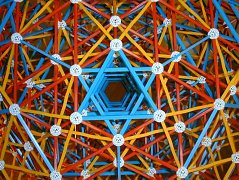

To make your own model, start with a b2 or b3 regular icosahedron for its core and keep in mind that at each vertex there are two opposite icosahedra and five octahedra connecting them. Around each edge is one icosahedron and two octahedra. The components in the 3D projection are flattened more and more as you get further from the center. You may recognize some of the flattened octahedra as triangular antiprisms from Unit 1.2 and some of the flattened icosahedra appear in Exploration 2A. There are also 30 totally flat icosahedra and 60 totally flat octahedra on the surface. Here are closeups along the 5-fold and 3-fold symmetry axes:


This model was constructed and photographed by Mira Bernstein and Vin
de Silva.